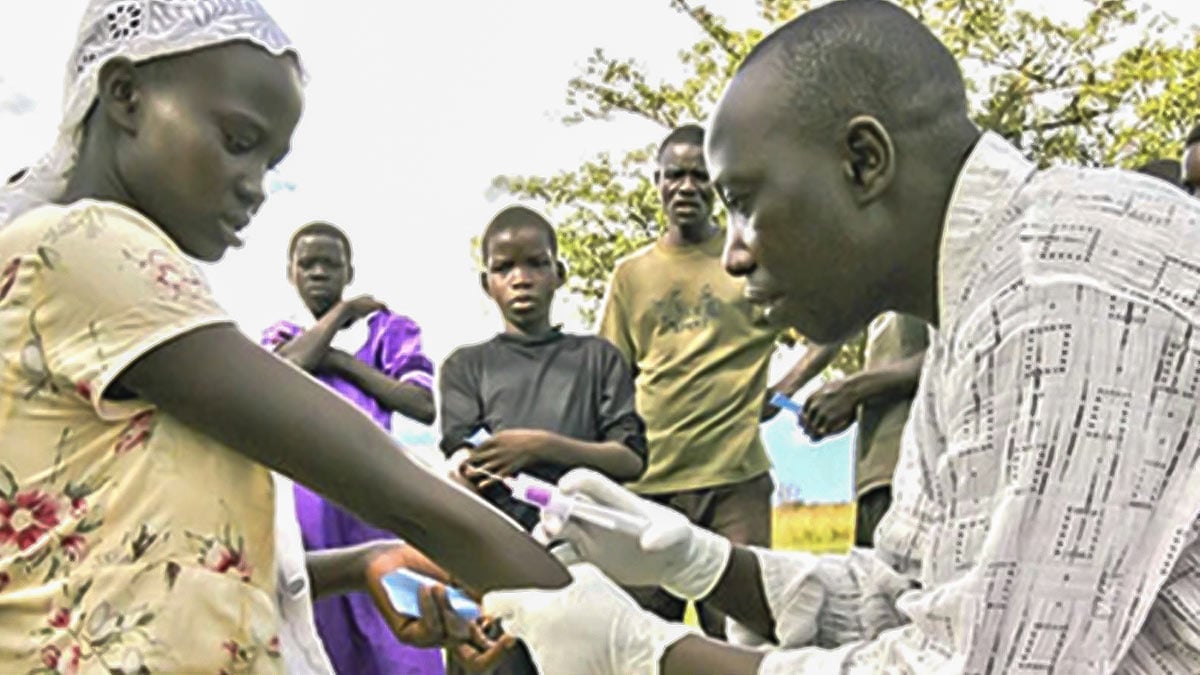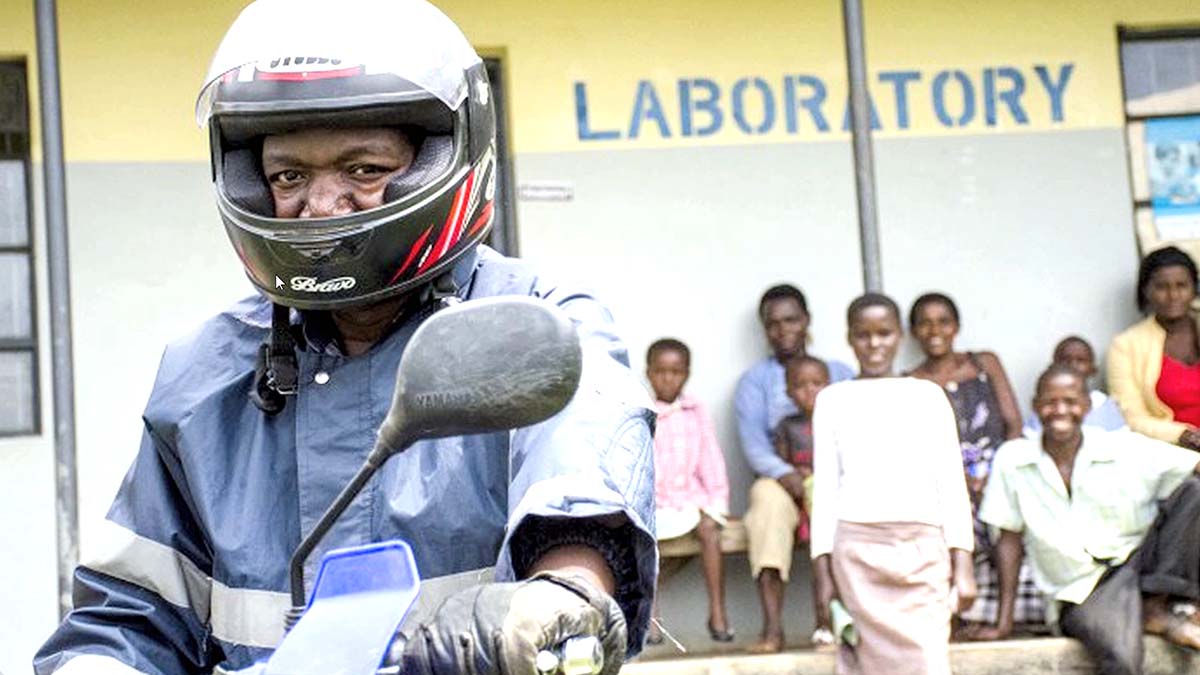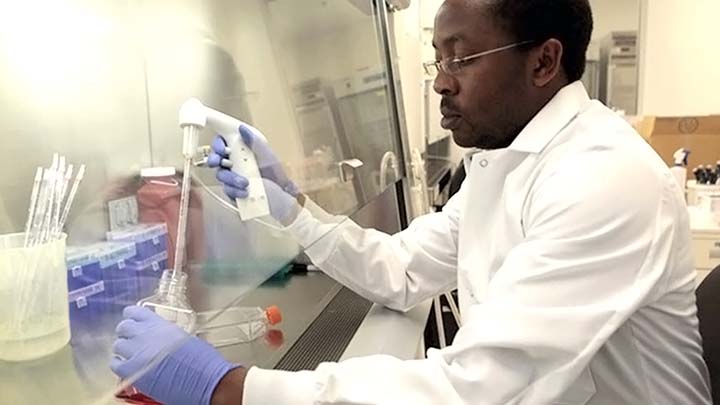Funding drives Countries to Choose Between CD4 testing and Viral Load - Campaigners Need to Step Up and Shout About Why it’s so Significant to use Both
Photo: Part of the sample network in Uganda (courtesy of Dr Charles Kiayga)

Debi Boeras
CEO of The Global Health Group

Tom Chiller
Chief of Mycotic branch at the Centres for Disease Control and Prevention

Ben Cheng
Specialist Consultant working to develop tech to aid treatment and diagnosis of HIV
For too long, CD4 testing has been on the wane in countries with high incidences of HIV. Yet it is the recommended way to identify people in advanced stages of the disease and whose reduced immunity therefore exposes them to potentially fatal, opportunistic infections. Indeed, the importance of CD4 testing cannot be understated. In July 2017, The World Health Organization (WHO) issued guidelines to advise that it’s an essential part of the initial diagnosis and management of advanced HIV disease.
Greater uptake of CD4 testing needed
Despite this plea from the WHO, Debi Boeras, CEO of The Global Health Impact Group, is concerned that there is still not enough uptake of CD4 testing to support the WHO guidelines for managing advanced HIV disease and rapid initiation of antiretroviral therapy. “I’ve had conversations with various key opinion leaders who are worried about this,” she says. “We hope that this is just a short lag in moving forward. We need funding and human resources in place to support testing.” “However, we quickly need more advocacy around the importance of CD4 testing. There still seems to be confusion — particularly among funders — about the roles for CD4 tests and viral load tests and their need for patient management and monitoring. They each have their much needed roles, and we badly need to get that message across.”
“There still seems to be confusion — particularly among funders — about the roles for CD4 tests and viral load tests and their need for patient management and monitoring”
Debi Boeras, CEO of The Global Health Impact Group
Viral load tests cannot replace CD4 tests
A patient’s CD4 count is measured via a simple blood sample. If it’s found to be below 200, it indicates that they’re at high risk of further disease progression and death, and so in urgent need of treatment. A viral load test, meanwhile, measures the number of HIV particles in a millilitre of blood, and is an important way to monitor disease progression — and therefore if treatment is being effective. But the truth is, both of these tests are needed to effectively manage HIV patients.”
The danger of Immune Reconstitution Inflammatory Syndrome
Lack of CD4 testing presents another danger to patients with advanced HIV disease, notes Tom Chiller, Chief of the Mycotic Diseases Branch at the Centres for Disease and Control and Prevention (CDC). “Medical professionals trying to save the lives of HIV patients with antiretroviral therapy (ART) may end up — unwittingly — doing them more harm than good,” he says. “Because, if individuals with advanced stages of the disease are given ART, they’re liable to suffer from potentially fatal immune reconstitution inflammatory syndrome, or IRIS.”1 The problem is this, says Chiller; while antiretroviral therapy can boost a patient’s immune system by reducing the HIV virus in their body, circulating pathogens in their system may cause a reaction that can lead to early mortality. “The way to avoid this is to identify those with a low CD4 count and screen them for invasive fungal diseases,” he explains. “These can be treated appropriately if they exist — and then the patient can be started on antiretroviral therapy for their HIV.” Chiller believes that simpler ways to gauge a patient’s CD4 count will be needed in future. “These tests don’t have to be quantitative,” he says. “And they don’t have to be perfect. I just want to know if the patient has a CD4 count of below 200 so I know they are at risk. I can then make the best clinical decisions on their behalf.”
Getting tests to remote communities is only half the challenge
Ben Cheng is a Specialist Consultant working to develop technology to aid treatment and diagnosis of HIV. He admits it can be difficult to deliver tests to high-risk communities, particularly if they are based in remote areas. “Point-of-care devices and professionals have to be delivered to the right locations in order to run CD4 tests properly,” says Cheng. “That’s not always easy in countries that have poor infrastructure or where roads get washed out in rainy seasons. But it’s not just about delivering tests to these communities. The right medications have to be available, too. After all, there’s no use identifying someone with a low CD4 count if they’re not immediately able to access the right package of care for their needs.”
Getting the CD4 message out to funders
Nevertheless, there are examples of countries who have found a solution to this logistical problem. “For example, Uganda has developed a comprehensive ’hub and spoke’ transportation network,” says Cheng. “The hub does the testing while the spokes provide it with samples via motorcycles, bicycles, and other kinds of transport.” Cheng is optimistic that the world will see greater uptake of CD4 testing. “I think countries are becoming aware that it’s something they need to do if we are to reduce advanced disease morbidity and mortality,” he says. “We now have to get the word out to funders who have been focusing on viral load testing and side-lining CD4. Without their help, it’s going to be very difficult to make any significant impact.”
Why count CD4 cells?
CD4 T lymphocytes (CD4 cells) are a type of white blood cell in human blood that play a major role in protecting the body from infection.
Learn more:
There were approximately 36.7 million people living with HIV at the end of 2016. iii
The African Region is the most affected region, with 25.6 million people living with HIV in 2016.iii
The African region also accounts for almost two thirds of the global total of new HIV infections.iii
CD4 cells are major targets for HIV. The virus binds to CD4 cells, enters them, replicates inside them, and eventually kills them.iv
The Centers for Disease Control and Prevention (CDC) considers people who have an HIV infection and CD4 counts below 200 cells/mm3 to have AIDS (stage III HIV infection), regardless of whether they have any signs or symptoms.v
Talk to an expert about CD4 testing solutions
CD4 Cell Counting

HIV Advanced Disease Management
More than a third of people starting ART have advanced HIV disease, and an increasing number of patients re-present to care at an advanced stage of HIV disease following disengagement from care.
WHO CD4 Guidelines for Immunocompromised Patients
The challenge for clinicians is not just to treat HIV patients with antiviral therapies – but to understand exactly how far their immune system has been compromised. Otherwise, they become susceptible to life threatening, opportunistic diseases.
CD4 Must Not be Sidelined if we are to Beat AIDS
Opportunistic infections that occur in people with weakened immune systems can be fatal. People who have low CD4 counts — especially below 200 — are at very high risk of opportunistic infections.
Funding Drives Countries To Choose Between CD4 Testing And Viral Load
CD4 testing is the recommended way to identify people in advanced stages of the disease and whose reduced immunity therefore exposes them to potentially fatal, opportunistic infections.References:
- HIV & immune reconstitution inflammatory syndrome (IRIS), Surendra K. Sharma and Manish Soneja, Indian J Med Res. 2011 Dec; 134(6): 866–877. https://www.ncbi.nlm.nih.gov/pmc/articles/PMC3284095/
- https://www.thelancet.com/commissions/global-health-HIV
- https://www.who.int/en/news-room/fact-sheets/detail/hiv-aids
- https://www.afro.who.int/health-topics/hivaids
- https://www.who.int/hiv/mediacentre/news/hiv-testing-90targets/en/
- http://www.unaids.org/sites/default/files/media_asset/20170720_Data_book_2017_en.pdf
- https://www.sciencedaily.com/releases/2018/07/180719195647.htm


